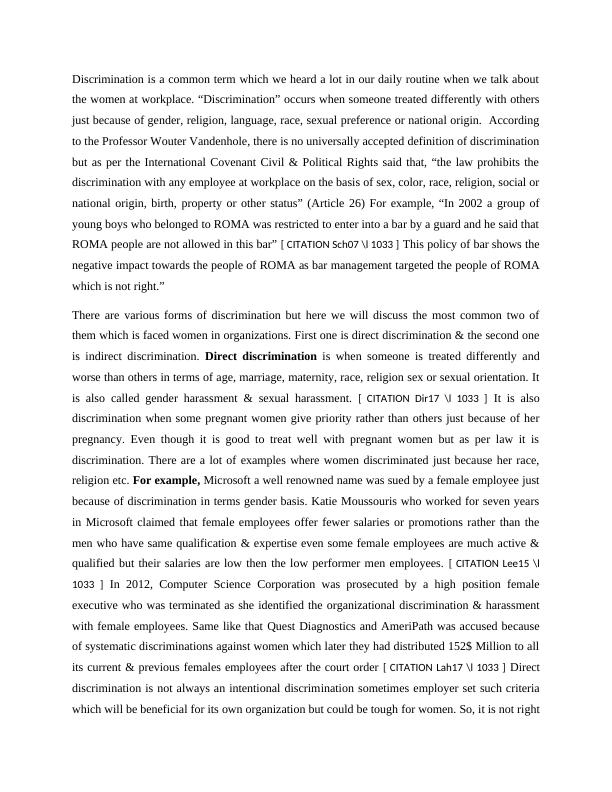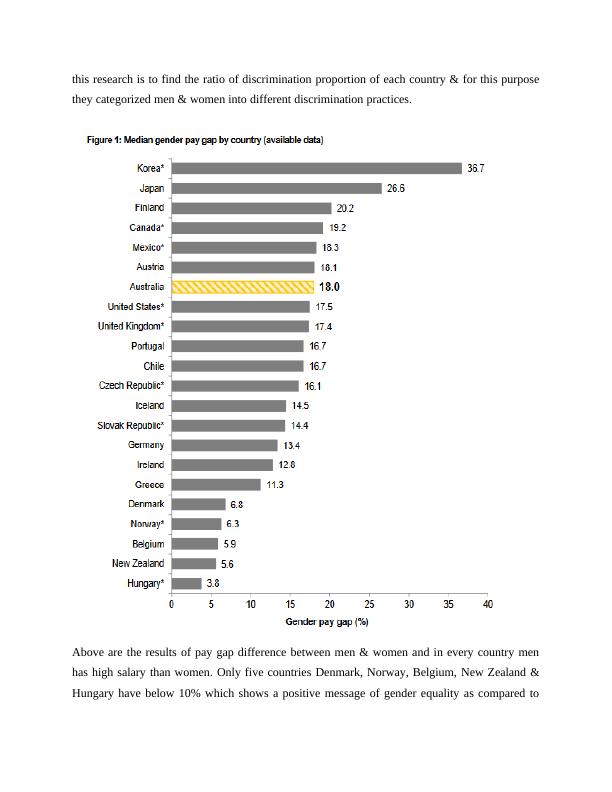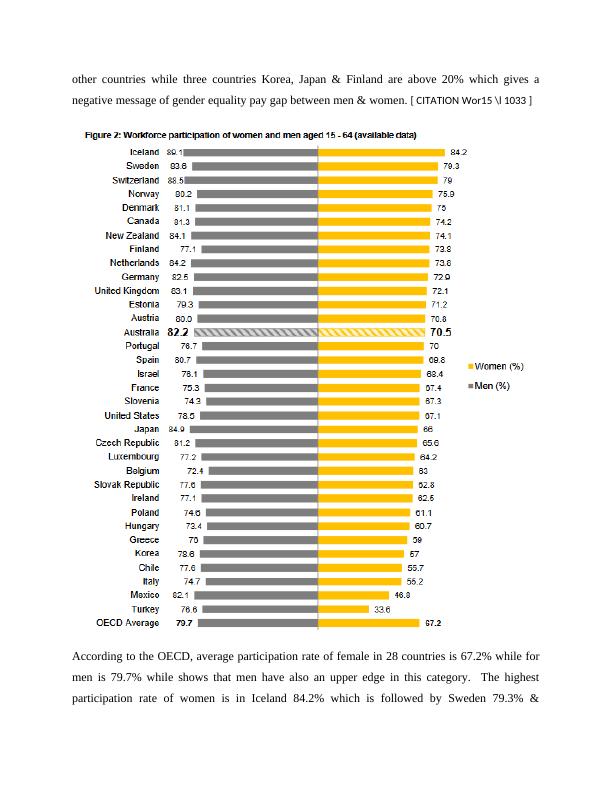Discrimination at Workplace: A Global Issue for Women
11 Pages2326 Words94 Views
Added on 2020-09-27
About This Document
Discrimination is a common term which we heard a lot in our daily routine when we talk about the women at workplace. There are various forms of discrimination but here we will discuss the most common two of them which is faced women in organizations. Discrimination is a major issue for women which sometimes lead them to attempt a suicide. Organizations should need to develop some antidiscrimination rules & laws for its employee and should be instructed to every employee that the person who breaks that antidiscrimination law; should be fired or terminated.
Discrimination at Workplace: A Global Issue for Women
Added on 2020-09-27
ShareRelated Documents
End of preview
Want to access all the pages? Upload your documents or become a member.
Equity, Equality, Diversity & Inclusion in Society and Organizations
|12
|881
|492
Legal Aspects of Business – PDF
|10
|3005
|293
Workplace Discrimination: Issues and Factors
|5
|1007
|347
Legal Risks and Defenses in Employment Law Assessment for Desklib
|7
|3566
|62
Speech Discrimination - PDF
|9
|2403
|267
Discrimination at Workplace
|10
|2803
|36




